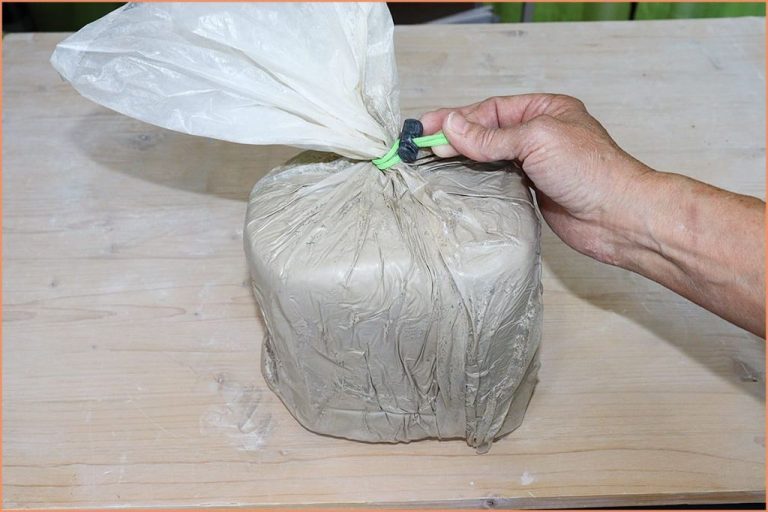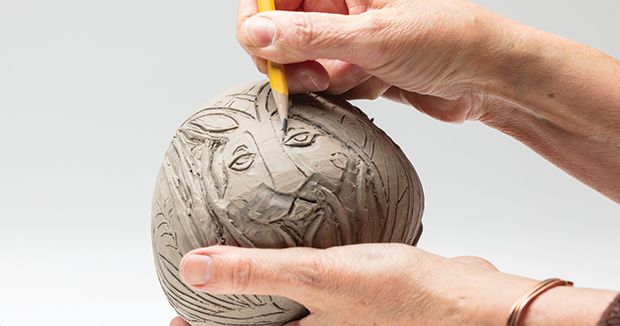Does Buoyancy Apply To Clay?
What is Buoyancy?
Buoyancy is the ability of an object to float in a fluid. When an object is immersed in a fluid, it experiences an upward force that counteracts the downward force of gravity. This upward force is known as buoyancy.
Buoyancy allows objects to float on the surface of a liquid rather than sinking. It occurs due to the differences in pressure and density between the object and the surrounding fluid.
When an object is placed in a fluid, it pushes away and displaces an amount of fluid equal to the object’s volume. The displaced fluid exerts an upward force on the object that is equal to the weight of the fluid displaced. This upward force counteracts the downward gravitational force on the object, allowing it to float.
If the upward buoyant force equals the object’s weight, the object will float completely submerged. If the buoyant force exceeds the object’s weight, the object will float on the surface of the liquid. The deeper the object is submerged, the greater the buoyant force since more fluid is displaced.
What Causes Buoyancy?
Buoyancy depends on the relative density of an object compared to the density of the surrounding fluid. This concept is known as Archimedes’ principle, named after the ancient Greek mathematician and physicist. Archimedes’ principle states that the buoyant force exerted on an object immersed in a fluid is equal to the weight of the fluid the object has displaced.
For example, if an object displaces a volume of water that weighs 10 pounds, then the buoyant force on the object is 10 pounds. This upward buoyant force opposes the downward force of gravity. If the buoyant force exceeds the object’s weight, the object will float. If the weight exceeds the buoyant force, the object will sink.
The key factor determining buoyancy is the density of the fluid compared to the density of the object. If the object is denser than the fluid, it will sink. If the object is less dense, it will float. This is why a piece of wood floats in water but sinks in mercury, since wood is less dense than water but denser than mercury.
Characteristics of Clay
Clay is composed primarily of hydrated silicates of aluminum known as alumina. The chemical structure gives clay a dense and heavy composition compared to other soils. The small size of clay particles results in a large surface area relative to volume, which leads to strong adhesive and cohesive properties when wet. When dry, clay becomes hard and brittle due to the electrostatic bonds between the small particles.
The precise chemical composition can vary, but clay contains significant amounts of crystalline hydrous aluminum phyllosilicates known as clay minerals. These silicate minerals give clay its plasticity, hardness, and density. Pure clay is white in color, but natural clays exhibit a range of colors from red, brown, grey, and green tints from mineral impurities.
The heavy density of clay relative to other soil particles or organic materials arises from the crystalline structure and molecular composition. With an average density around 2.6 g/cm3, clay has a much higher density than water. This has important implications for buoyancy, as denser substances tend to sink rather than float.
Density of Water
Freshwater normally has a density of around 1000 kg/m3 at room temperature. By contrast, seawater is slightly denser than freshwater, with a density of approximately 1025 kg/m3. This is because seawater contains various dissolved salts and other substances that increase its density. The density of both freshwater and seawater is also affected by temperature, becoming less dense as temperature rises. But in general, the density of water plays an important role in buoyancy and enabling objects to float. The higher density of seawater explains why objects can float more easily in saltwater compared to freshwater. This density difference will be a key factor when examining how buoyancy applies to clay.
Applying Buoyancy Principles
When considering if buoyancy applies to clay, we need to look at some key principles of buoyancy. The basic principle is that objects denser than water will sink, while objects less dense than water will float.
Clay’s density is an important factor. Most types of clay are more dense than water. For example, red clay has a density around 2.6 g/cm3 while water’s density is 1 g/cm3. Therefore, a lump of clay is more than twice as dense as the same volume of water.
Based on the density differences, we can conclude that clay does not have enough buoyancy to float. Being more dense than water, clay will sink in water rather than float on the surface.
Exceptions
While dense clay usually sinks in water, there are some exceptions where certain types of clay can float temporarily before becoming waterlogged and sinking.
Some very porous clays contain microscopic holes and channels that trap air bubbles. This makes these clays lighter and allows them to initially float at the surface of water, even though the clay itself is denser than water.
However, over time these air pockets fill with water in a process called capillary action. Capillary action describes the ability of a liquid to flow into small spaces, defying gravity. As water infiltrates the pores in the clay through capillary action, the trapped air is displaced and the clay becomes saturated with water.
Once saturated, the dense clay loses its buoyancy and sinks below the surface. But for a short time, the air bubbles trapped in the porous clay structure can provide enough lift for it to float.
Testing Buoyancy of Clay
A simple experiment can be conducted to test whether clay exhibits buoyancy in water. Here are the steps:
- Gather a lump of clay and a container of water.
- Shape the clay into a ball or cylinder.
- Slowly place the clay into the water and observe if it sinks or floats.
- Allow the clay to sit in the water undisturbed for a couple minutes.
- Check again to see if the clay has sunk to the bottom or is floating.
This experiment demonstrates whether the density and weight of the clay sample allows it to float on top of water, which has a higher density. Or if the clay is denser than water, it will sink. This directly tests the buoyant principles involving relative density of clay and water.
Applications
Clay’s buoyant properties have implications for its practical uses. Clay that sinks in water can be utilized to create dense ceramics that are less porous and more durable. The high density allows sturdy ceramic products to be molded that maintain their shape during firing and resist breakage in use. Sinking clay is ideal for manufacturing ceramic tiles, plates, bricks, pipes and other objects where weight and durability are desired qualities.
In contrast, clay that floats is less commonly used. The lower density and more porous nature of floating clay makes it prone to cracking and breaking when fired or subjected to pressure. Floating clay has limited applications in pottery or ceramics manufacturing. However, floating clay may occasionally be used as a lightweight filler material in cement mixtures and construction applications when reducing the density of the end product is the priority rather than maximizing strength.
Summary
This article explored the relationship between density and buoyancy, and how that applies to clay. To recap, an object’s density determines whether it will float or sink in water. Objects less dense than water will float, while objects more dense than water will sink.
Clay’s density ranges between 1.5-2.65 g/cm3 depending on the type of clay. Since this is denser than the density of water, which is 1 g/cm3, clay readily sinks when placed in water. Clay’s composition and molecular structure make it more compact and heavy for its size compared to water molecules. This greater density causes clay to sink rather than float when immersed in water.
While size, shape, and density all factor into an object’s buoyancy, the density of clay exceeds that of water, causing it to sink. Understanding these scientific principles helps explain everyday observations, like why a clay pot placed in water sinks to the bottom.
Conclusion
Clay does not demonstrate buoyancy in water due to its high density. This is because clay has a density much greater than that of water. For an object to float, it needs to displace a weight of water equal to its own weight. Since clay is denser than water, the weight of water displaced by a piece of clay is less than the weight of the clay itself. This means the clay will sink rather than float. The principles of buoyancy do not apply to materials like clay that are denser than the fluid they are placed in. Clay’s composition and molecular structure result in a density that prevents it from floating on water, as less dense materials are able to do.





